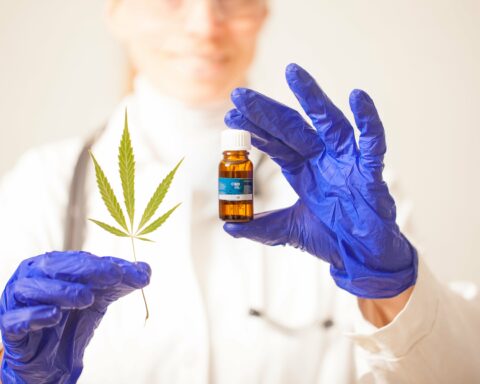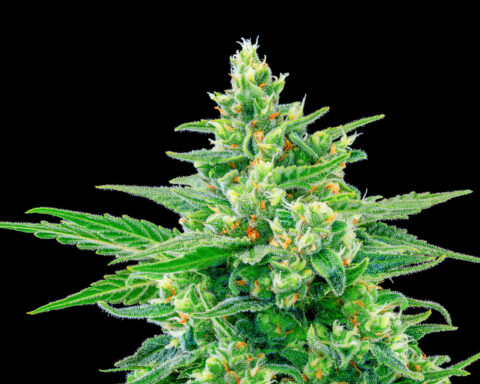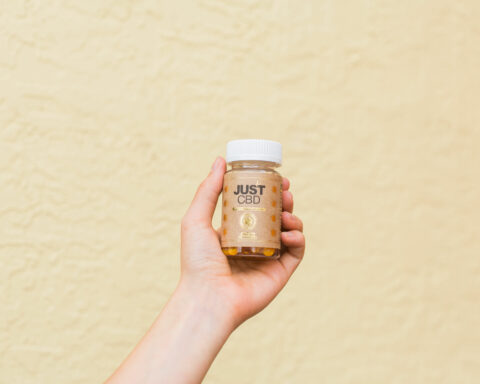According to research, there are 113 cannabinoids in the marijuana plant. The most well-known are tetrahydrocannabinol (THC) and cannabidiol (CBD).
Even when you concentrate solely on these two, you can perceive the major contrasts. For decades, many assumed that THC and CBD were the primary players in cannabis’ potential therapeutic advantages. Due to the plant’s ban, there has been a lack of research. As more scientists obtain access to marijuana for research, they’ve learned that other, less common cannabinoids are at least mainly accountable for marijuana’s medical effects. Discussed below are some of the lists of cannabinoids and their significance.
What Exactly Is A Cannabinoid
It is a chemical molecule that acts on the CB (cannabinoid) receptors in the endocannabinoid system (ECS). Scientists believed over 40 years ago that cannabinoids generated physiological and behavioral impacts by interacting with cell membranes. There is much to learn about how marijuana and its cannabinoids affect the body and mind after discovering the first cannabinoid receptors in the 1980s. The CB1 and CB2 receptors are well known, and GPR55 maybe a third. Others are probably waiting to be uncovered. When you observe shimmering trichomes on a marijuana plant nearing harvest, remember that as the primary storage location for cannabinoids.
THC – Tetrahydrocannabinol
Tetrahydrocannabinol is, also known as Delta 9-THC, is the most extensively researched and well-known cannabinoid. It binds to the CB1 receptors in the brain, according to research published in 1988. As a result, the ECS releases dopamine, resulting in the calmness and euphoria associated with marijuana. THC harms concentration levels and cognitive, sensory perception, and mobility when high. According to a study published in Pharmaceuticals & Medical Technology in February 2019 by Boehnke et al., about 65 percent of all medical marijuana patients use marijuana to relieve chronic pain. This information comes as no surprise.
THCV – Tetrahydrocannabivarin
The chemical structure of THCV is identical to that of THC. However, it has fewer carbon atoms. It has fascinating potential, but there is so little of it that it does not get you high. In modest dosages, the molecule is thought to serve as an activator to some of THC’s effects. In contrast, in high dosage, it is thought to amplify them. If you locate a strain high in THCV, the effects include a clear-headed psychedelic high that lasts only a short time yet gives you a rush of energy. Researchers have discovered high levels of THCV in Cannabis sativa plants in Pakistan, India, Thailand, China, and Afghanistan. Furthermore, some plants have THCV levels that account for 53% of total cannabinoids! Surprisingly, THCV is not listed as a Schedule.
CBD – Cannabidiol
CBD has lately entered the mainstream, promising “healing without the high.” It has grown from a niche business to a multibillion-dollar industry in just a few years. Cannabinol is the most abundant cannabinoid in the marijuana plant and the second most abundant in industrial hemp. The Farm Bill was signed into law by President Trump in December 2018. It permitted industrial hemp cultivation in the United States, which has energized an already robust industry. Hemp-derived CBD is allowed in 47 states as of this writing. It is also legal in Idaho, but only if you meet certain requirements. It is only available to a small number of people with intractable epilepsy in Nebraska and is completely free of charge. CBD may be able to reduce the negative side effects of THC. Aso et al. conducted a study in Molecular Neurobiology in 2019 that looked at CBD’s effect on THC’s effects. CBD was discovered to indirectly limit THC’s effects on CB1 receptors by increasing the activity of adenosine type II receptors. This receptor works in the opposite direction as CB1 receptors.
Cannabidivarin (CBDV)
This cannabinoid is non-intoxicating and has a similar structure to CBD. Researchers discovered it in 1969, but it received little attention until recently. CBDV is well-known for its anticonvulsant properties, mediated by activating an ion channel in the peripheral and central nervous systems known as TRPV1. It functions as a receptor and aids in the modulation and transmission of pain.
CBN – Cannabinol
Archaeologists discovered cannabis containing nearly 800 grams of CBN when they excavated a 2,700-year-old cemetery in China! CBN is produced when the THC in marijuana plants degrades due to age or light exposure. Cannabinol has a numbing effect when consumed, making it excellent for those who suffer from sleeplessness. According to Steep Hill Labs, 5mg of CBN is a more efficient way to calm the body than 10mg of Valium. Generally, pot enthusiasts dislike the presence of CBN in their cannabis because it indicates an old and stale herb.
Cannabigerol (CBG)
CBG is undoubtedly one of the most important cannabinoids, yet few people recognize it. It is the chemical precursor to THC and CBD. Contrastingly, both cannabinoids are derived from CBG and would not exist without it. Though marijuana strains contain less than 1% of this cannabinoid, it is required to produce cannabinoids that provide medical effects.
CBDA – Cannabidiolic Acid
CBDA is an acidic precursor of CBD that is non-intoxicating. CBDA can be found in raw hemp or a raw marijuana strain that is strong in CBD, such as Charlotte’s Web. CBDA, like THCA and THC, produces CBD when decarboxylated. For a long time, experts assumed that CBDA, and hence raw hemp, had no pharmacological use until one converted it into CBD. CBDA, on the other hand, affects the body. It, like CBD, has no direct interaction with the ECS’s receptors. Nevertheless, it stimulates the 5-HT1A serotonin receptors.
THCA – Tetrahydrocannabinolic Acid
Despite its name, THCA does not have the intoxicating characteristics of THC. You can only find it in raw and live cannabis. It is typically the primary element of resin concentrates, accounting for 50 to 90 percent of the weight. It is the acidic form of THC that, when subjected to heat, decarboxylates to the psychoactive molecule.
Conclusion
Ultimately, when it comes to defining the benefits of marijuana’s cannabinoids, it is almost impossible to exhaust all. There are around 113 of them, and less than 10% have been studied to any extent. Then there are the hundreds of additional compounds we have yet to investigate. As cannabis laws relax, it is expected to allow scientists to conduct more studies to finally determine the uses of marijuana.
References
Klumpers, L. E., & Thacker, D. L. (2019). A brief background on cannabis: From plant to medical indications. Journal of AOAC International, 102(2), 412-420.
Boehnke, K. F., Gangopadhyay, S., Clauw, D. J., & Haffajee, R. L. (2019). Qualifying conditions of medical cannabis license holders in the United States. Health Affairs, 38(2), 295-302.
- Is Mushroom Coffee Worth the Hype? An Expert’s Take - April 19, 2024
- Missionary Position – Least Likely To Bring You To Climax - April 7, 2023
- Vibrators could put you in Jail - March 31, 2023









